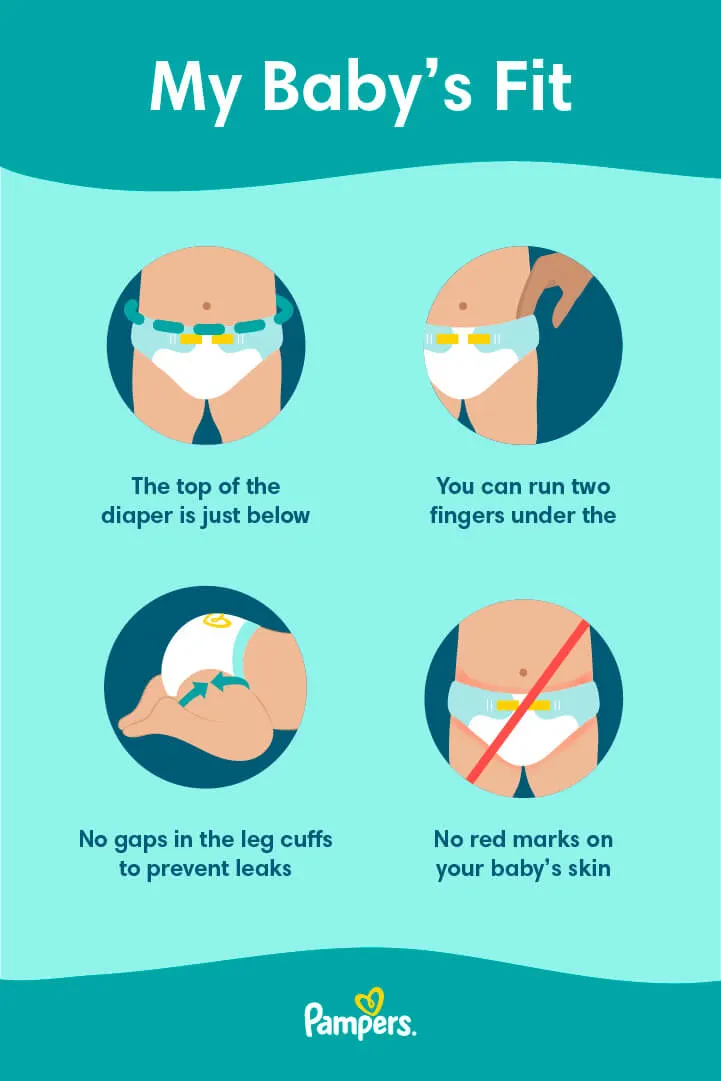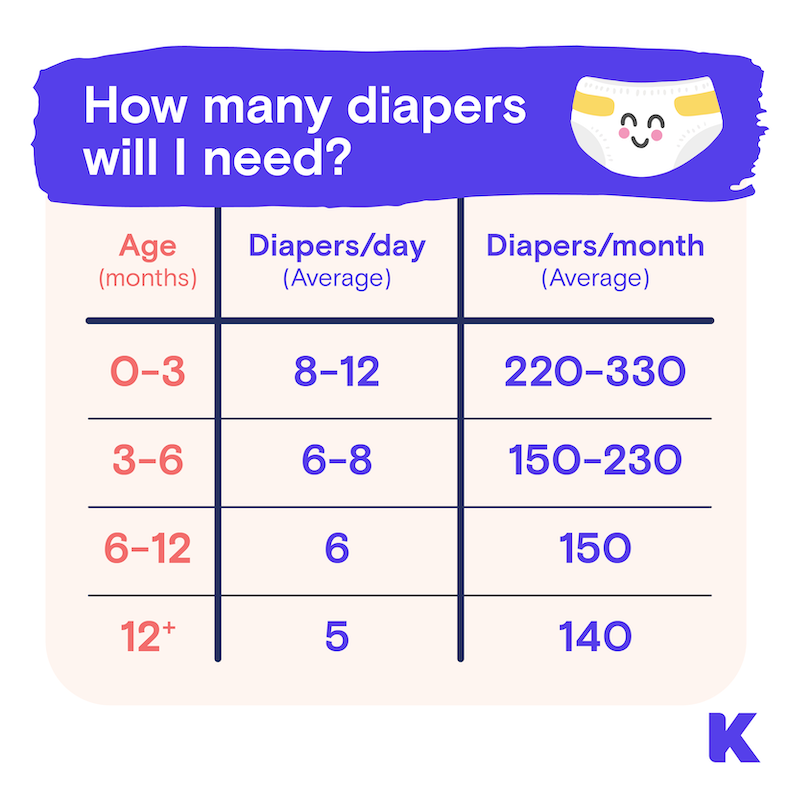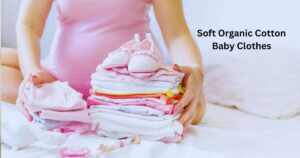To use a baby diaper, position it under the baby and secure the tabs snugly. Ensure the diaper fits comfortably.
Changing a baby’s diaper is an essential skill for new parents. Proper diaper usage keeps the baby dry and prevents rashes. Choosing the right diaper size is crucial. Always have supplies like wipes and rash cream ready. Clean the baby’s bottom thoroughly during each change.
Secure the diaper snugly without being too tight. Check frequently for wetness and change promptly. Proper disposal of used diapers is also important. By following these steps, parents can ensure their baby stays comfortable and happy. Regular diaper changes contribute to the baby’s overall health and well-being.
Choosing The Right Diaper
Choosing the right diaper for your baby is crucial. A well-fitting diaper keeps your baby comfortable and dry. It also prevents leaks and skin irritations. Here, we guide you through the essential factors to consider. Let’s dive into the types of diapers and sizes available.
Types Of Diapers
There are several types of baby diapers to choose from. Each type has its own benefits and drawbacks.
- Disposable Diapers: These are the most convenient. They are easy to use and throw away.
- Cloth Diapers: Reusable and eco-friendly. They need regular washing.
- Biodegradable Diapers: These are like disposable diapers but break down faster. They are better for the environment.
- Swim Diapers: Specially designed for water. They don’t swell up like regular diapers.
Diaper Sizes
Diaper sizes vary based on your baby’s weight. Choosing the right size is important for comfort and leak protection.
| Diaper Size | Weight Range |
|---|---|
| Newborn | Up to 10 lbs |
| Size 1 | 8-14 lbs |
| Size 2 | 12-18 lbs |
| Size 3 | 16-28 lbs |
| Size 4 | 22-37 lbs |
| Size 5 | 27+ lbs |
| Size 6 | 35+ lbs |
Check the diaper packaging for the correct weight range. Always ensure the diaper fits snugly without being too tight.
Preparing For A Diaper Change
Changing a diaper can be easy with some preparation. Follow these steps to get ready for a smooth diaper change. This guide will help you gather everything you need and set up a clean space.
Gathering Supplies
First, gather all the necessary supplies. Here’s a list of what you’ll need:
- Clean Diaper: Have a fresh diaper ready.
- Baby Wipes: Use wipes to clean your baby.
- Diaper Cream: Apply cream to prevent rashes.
- Changing Pad: Place your baby on a soft, clean surface.
- Disposal Bag: Use a bag for the dirty diaper.
Having everything within reach saves time and keeps your baby safe.
Setting Up A Clean Space
Next, set up a clean and safe changing area. Follow these tips:
- Choose a Flat Surface: Use a sturdy table or floor.
- Lay Down a Changing Pad: Protect the surface and provide comfort.
- Disinfect the Area: Wipe the surface with a disinfectant.
- Keep Toys Handy: Distract your baby with a toy or rattle.
A clean and organized space makes the process easier. It also keeps your baby comfortable and safe.
Removing The Dirty Diaper
Changing a baby’s diaper may seem challenging at first. With practice, it becomes second nature. This section guides you through the process of removing the dirty diaper. Proper technique ensures your baby stays clean and comfortable.
Undoing Fasteners
Lay your baby on a clean, flat surface. Undo the diaper fasteners carefully. Fasteners may be adhesive tabs or Velcro strips. Fold the fasteners back onto themselves to avoid sticking to the baby.
Once the fasteners are undone, gently lift the front of the diaper. Take a quick glance inside to assess the situation. Use the front of the diaper to wipe away excess mess.
Cleaning The Baby
Hold your baby’s legs up gently by the ankles. Use baby wipes or a damp washcloth to clean the area. Wipe from front to back to prevent infections. Ensure all creases and folds are clean.
If the skin is red or irritated, apply a diaper rash cream. Let the area dry completely before putting on a new diaper.
Dispose of the dirty diaper in a diaper pail or sealed bag. Wash your hands thoroughly after changing the diaper.

Credit: m.youtube.com
Applying A New Diaper
Applying a new diaper to your baby might seem tricky at first. With a few easy steps, you will master it in no time. Let’s break it down into two main actions: Positioning the Diaper and Securing the Fasteners.
Positioning The Diaper
First, lay your baby on a clean, flat surface. Make sure your baby is comfortable. Open the new diaper and find the back side. The back side usually has tabs or fasteners.
Lift your baby’s legs gently and slide the diaper under the baby. The back side should be near the waist. The front of the diaper should come up between your baby’s legs.
| Step | Description |
|---|---|
| 1 | Lay baby on flat surface |
| 2 | Open new diaper and find back side |
| 3 | Lift legs and slide diaper under baby |
| 4 | Position back near waist |
| 5 | Pull front up between legs |
Securing The Fasteners
Next, hold the front of the diaper in place. With the other hand, pull the tabs or fasteners from the back. Stick them to the front of the diaper. Make sure the diaper is snug but not too tight.
Check the leg cuffs to ensure they are out. This helps prevent leaks. Adjust the diaper for a comfortable fit.
- Hold front of diaper
- Pull fasteners from back
- Stick fasteners to front
- Ensure snug fit
- Check leg cuffs
- Adjust for comfort
You have now successfully applied a new diaper! With practice, it will become second nature.
Disposing Of The Dirty Diaper
Proper disposal of a dirty diaper is crucial for maintaining hygiene. It also helps in keeping your home odor-free. In this section, we’ll cover the best methods to dispose of dirty diapers. We’ll also explore eco-friendly options for those keen on reducing waste.
Proper Disposal Methods
Here are some steps to ensure proper disposal of a dirty diaper:
- Wrap the diaper tightly to contain any mess.
- Place the diaper in a diaper pail or a plastic bag.
- Tie the bag securely to prevent any leaks.
- Dispose of the bag in an outdoor trash can.
Eco-friendly Options
For those interested in sustainable options, consider these choices:
| Option | Description |
|---|---|
| Biodegradable Diapers | These diapers break down faster than regular ones. |
| Cloth Diapers | Reusable and washable, reducing landfill waste. |
| Compostable Liners | These liners can be composted along with household waste. |
Choose biodegradable bags for disposing of dirty diapers. This helps in reducing plastic waste. Also, try using compostable liners that can be easily composted. These steps contribute to a more sustainable lifestyle.
:max_bytes(150000):strip_icc()/How-to-change-a-diaper-289239-f3333dfdf73049318a1b155f99540060.png)
Credit: www.parents.com
Preventing Diaper Rash
Diaper rash can make your baby uncomfortable. Preventing diaper rash is important. Here are some tips to keep your baby’s skin healthy.
Using Barrier Creams
Barrier creams protect your baby’s skin. They create a shield against moisture. Apply a thin layer during each diaper change. Look for creams with zinc oxide. This ingredient is very effective. Make sure the skin is dry before applying the cream. Always wash your hands before and after application. Use a clean cloth or wipe to remove any excess cream.
Choosing Breathable Diapers
Breathable diapers reduce moisture buildup. Moisture can cause diaper rash. Choose diapers made from natural materials. Look for brands that emphasize breathability. Avoid diapers with plastic outer layers. These can trap moisture. Change diapers frequently to keep the area dry.
| Material | Benefit |
|---|---|
| Cotton | Soft and breathable |
| Bamboo | Antibacterial properties |
- Check the fit of the diaper. It should not be too tight.
- Allow some diaper-free time each day. This lets the skin breathe.
- Use unscented wipes to avoid irritation. Fragrances can cause rashes.
- Change the diaper as soon as it is wet or soiled.
- Clean the diaper area thoroughly with each change.
- Pat the area dry, do not rub.
These steps help keep your baby’s skin rash-free. Consistency is key to preventing diaper rash.
Tips For Diapering On The Go
Diapering your baby while traveling can be tricky. But with some smart tips, you can manage it easily. Here’s how you can make diaper changes smooth and quick when you’re out.
Packing A Diaper Bag
Packing the right items makes all the difference. Organize your diaper bag so you can grab what you need fast.
| Item | Quantity |
|---|---|
| Diapers | 5-7 |
| Wipes | 1 pack |
| Changing pad | 1 |
| Plastic bags | 3-4 |
| Extra clothes | 1 set |
Diapers are the most important item. Always carry 5-7 diapers. Wipes are essential for cleaning. A full pack should be enough. Use a changing pad to keep surfaces clean. Plastic bags are handy for dirty diapers. Don’t forget a set of extra clothes for spills or accidents.
Finding Changing Stations
Look for changing stations in public places. Many stores and restaurants have them.
- Malls often have baby care rooms.
- Airports provide family restrooms.
- Parks may have designated areas.
If you can’t find a station, use a clean and safe spot. The backseat of your car can work well. Always carry a portable changing pad for such situations.
Troubleshooting Common Issues
Even seasoned parents face diaper troubles. Here, we tackle common issues. From leaks to allergies, this guide helps you solve diaper problems.
Leaks And Blowouts
Leaks and blowouts can be messy. Ensure the diaper fits snugly. Check the leg cuffs are not tucked in. Use the right size. A too-small diaper leaks easily. Change diapers frequently to avoid overfilling. At night, use overnight diapers. They absorb more and last longer.
Here is a table to help with diaper sizes:
| Baby Weight | Diaper Size |
|---|---|
| Up to 10 lbs | Newborn |
| 8-14 lbs | Size 1 |
| 12-18 lbs | Size 2 |
| 16-28 lbs | Size 3 |
Sensitivity And Allergies
Babies have sensitive skin. Some diapers cause rashes. Use hypoallergenic diapers. They are gentle on the skin. Avoid scented diapers. Fragrances can irritate. Change diapers often to keep the skin dry. If redness occurs, try a different brand. Use a barrier cream to protect the skin.
Here are steps to manage diaper rash:
- Clean the area with warm water.
- Pat dry with a soft towel.
- Apply a thin layer of barrier cream.
- Use a hypoallergenic diaper.
- Change diapers frequently.

Credit: www.pampers.com
Frequently Asked Questions
How Do You Properly Use A Baby Diaper?
To properly use a baby diaper, first, lay your baby on a flat surface. Slide the diaper under the baby, ensuring the back is higher than the front. Fasten the tabs snugly but not too tight. Check for gaps to prevent leaks.
How Often Should You Change A Baby Diaper?
You should change a baby diaper every 2-3 hours or immediately after they soil it. Frequent changes help prevent diaper rash and keep your baby comfortable.
What Are The Signs A Diaper Needs Changing?
Signs a diaper needs changing include a wet or soiled diaper, a strong odor, and your baby showing discomfort. Check the diaper frequently to avoid rashes.
Can You Use Baby Powder With Diapers?
Yes, you can use baby powder with diapers to keep your baby’s skin dry. However, use it sparingly to avoid respiratory issues. Always apply it away from your baby’s face.
Conclusion
Mastering baby diaper use boosts both confidence and comfort. Follow the steps, and diaper changes will become second nature. Keep supplies handy, and always prioritize your baby’s hygiene. With practice, you’ll be a diaper-changing pro in no time. Happy parenting!




